back to
The 1898 Trans-Mississippi Stamps
The Trans-Mississippi stamps of 1898, also known as the Omaha Issue or Omahas, are among the finest and most desirable of all U.S. stamps. They were produced to publicize the Trans-Mississippi and International Exposition in Omaha, held from June 1 to November 1, 1898. The goal of the exposition was to showcase the economic and social development west of the Mississippi River. Over those 154 days the exposition drew an estimated 2.6 million visitors who came to see more than 4000 exhibits and attractions.
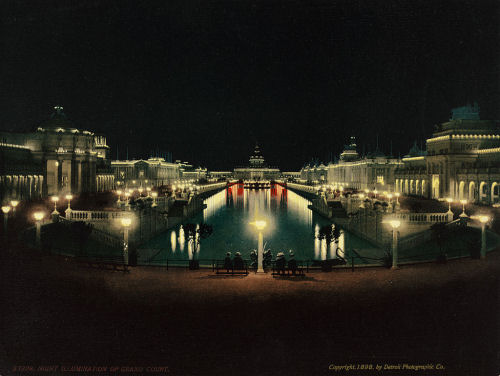
The Grand Court of the Trans-Mississippi Exposition at night
Did you know that this classic series was originally planned to be printed in two colors? As the first series of stamps produced entirely in-house by the Bureau of Engraving and Printing, postal officials wanted this to be an issue of distinction. Original plans called for a set of nine denominations ranging from 1 cent to $2, to be printed with colored frames and black centers. Designs were adapted from various photographs, drawings and paintings depicting historic scenes and life in the American West. Protests arose from the stamp collecting community complaining about another expensive issue, still sore from the Columbian issue five years earlier. Undeterred, the Post Office continued with plans for the set of nine stamps.
However, due to the Spanish-American War and increased demand for revenue stamps to pay for new taxes financing the war, printing resources were reallocated and the stamp designs were modified and printed in one color, since two-color stamps would require two passes through the printing press. While this saved time and labor printing the stamps, since the original engraved dies – which had been prepared for two colors – needed to be retooled, the release of the stamps, originally planned for the opening day June 1, 1898, was delayed to June 17. The original two-color versions are very scarce collectibles and were never sold to the public, having been printed only as artist's proofs before the change to single-color dies.
Design Sources of the Original 1898 Series
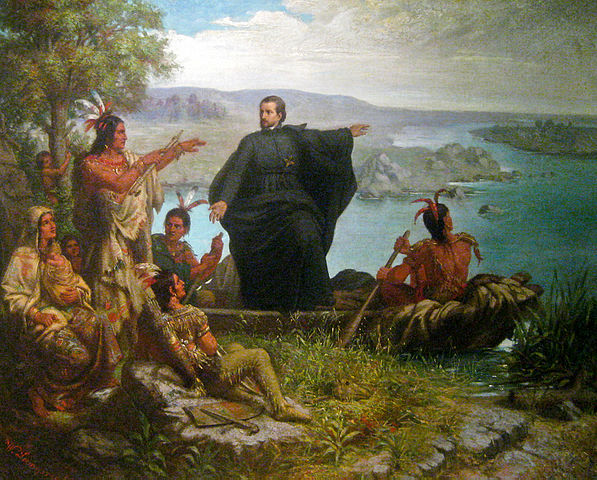 |
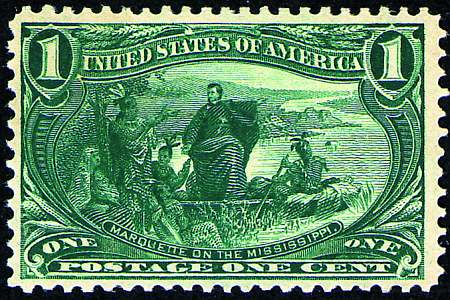 |
|
1¢ "Marquette on the Mississippi" (Scott #285) "Marquette on the Mississippi" is taken from a painting by William Lamprecht called "Father Marquette and the Indians" and shows Father Jacques Marquette, a Jesuit priest, preaching to a group of Native Americans. Marquette, along with Louis Joliet and five Frenchmen, explored the upper Mississippi River in 1673. Some scholars believe this painting may actually show a scene along the Wisconsin River. |
|
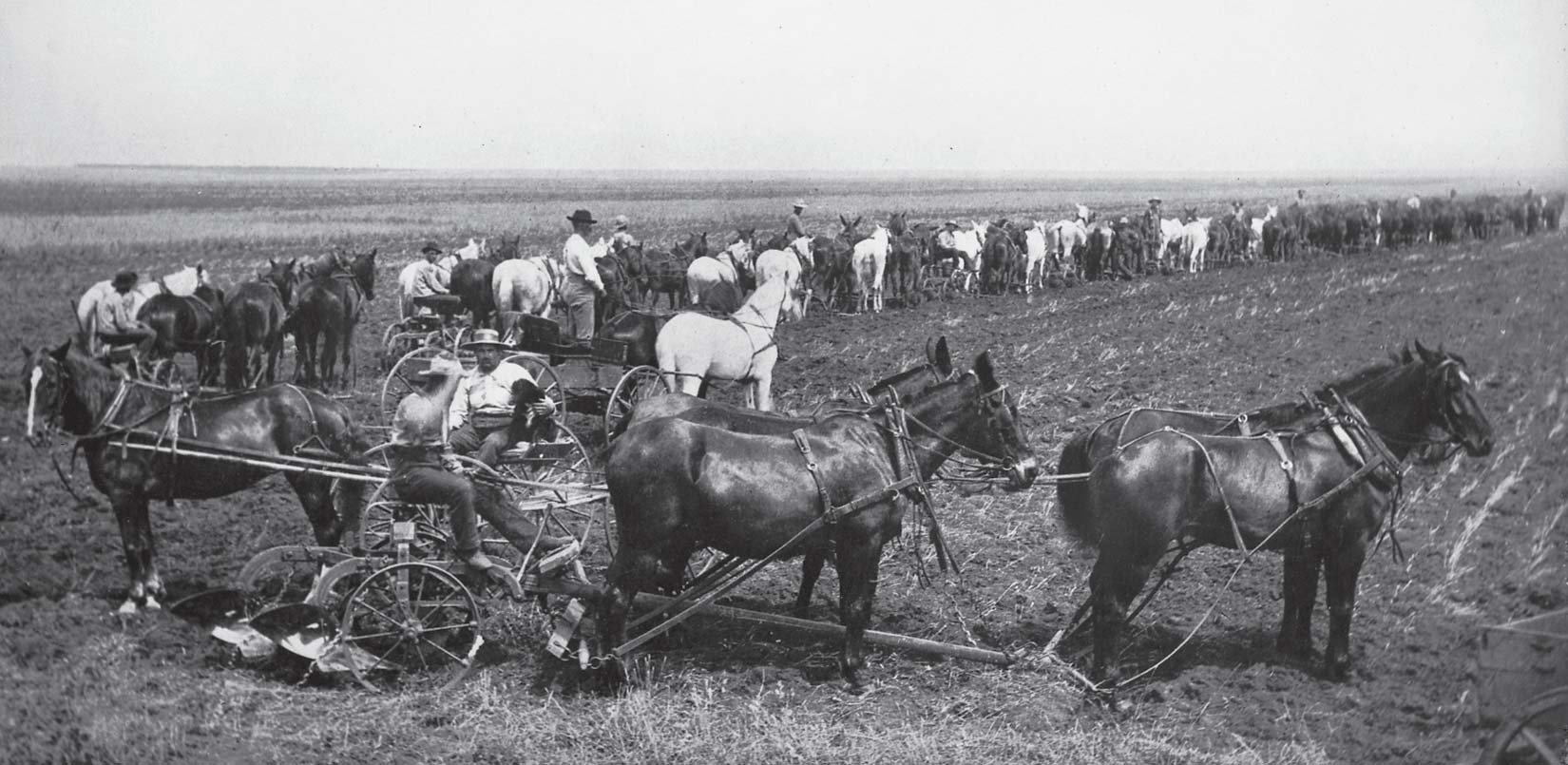 |
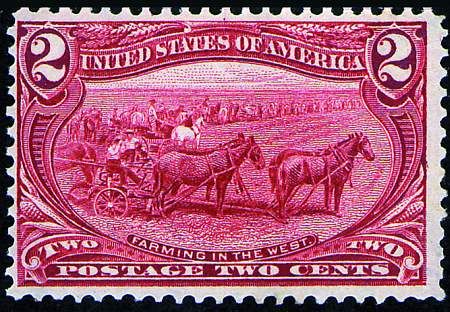 |
|
2¢ "Farming in the West" (Scott #286) The design of "Farming in the West" was taken from a photograph of a plowing scene in the Amenia and Sharon Land Company Bonanza Farm in Cass County, North Dakota, taken around 1888. Seconds before the photographer snapped this picture, a gust of wind blew the hat off the farmer on the plow, and in grabbing his hat he covered his face. For years the farmer regretted this unfortunate incident that prevented his face from appearing on a stamp. This was the first time a photograph of living people was used on a U.S. stamp. The original inscription on the planned $2 version read "Harvesting in the West". |
|
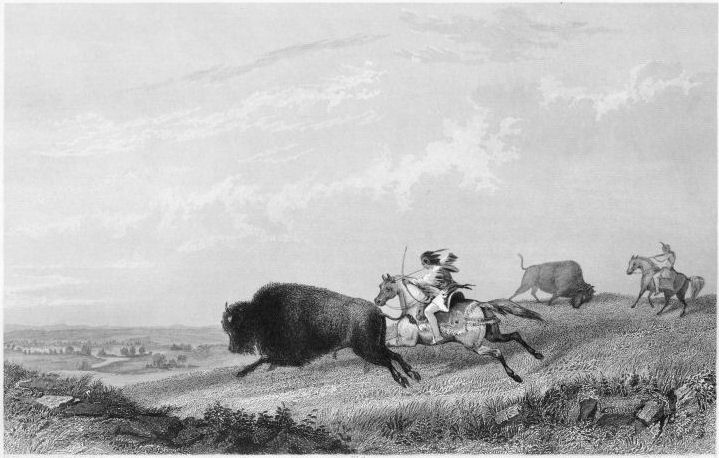 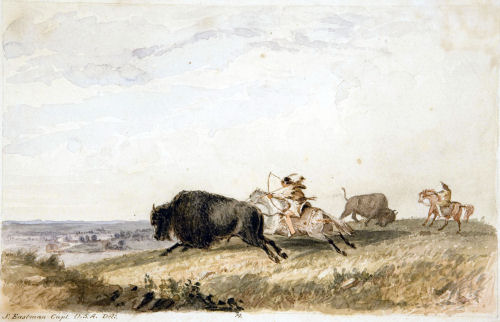 |
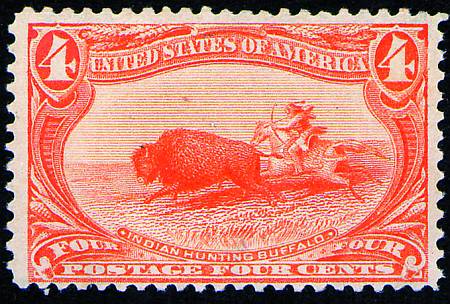 |
|
4¢ "Indian Hunting Buffalo" (Scott #287) "Indian Hunting Buffalo" is based on "Buffalo Chase" by Captain Seth Eastman, a soldier who captured many scenes of the Old West, first as a watercolor painting from around 1850, then published as an engraving in Henry Rowe Schoolcraft's History of the Indian Tribes of the United States in 1854, and an oil painting in 1868. It pictures Santee Dakota natives on a buffalo hunt, and the oil painting is part of the collection of the U.S. House of Representatives. The 1854 engraving is the source used for the stamp. |
|
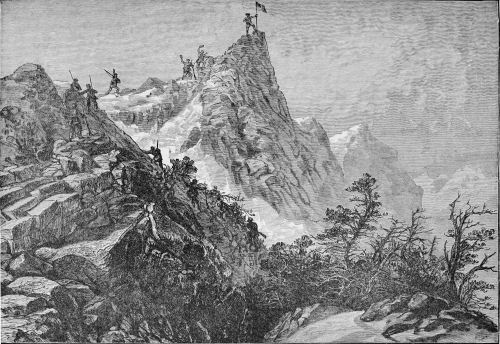 |
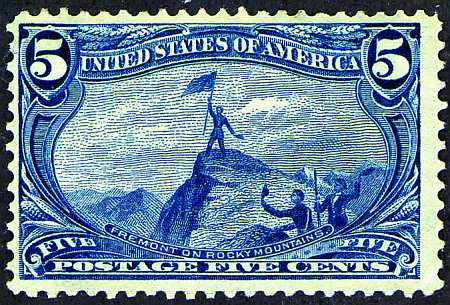 |
|
5¢ "Fremont on Rocky Mountains" (Scott #288) "Fremont on Rocky Mountains" shows explorer John C. Fremont raising the American flag on the highest peak of the Rocky Mountains during his 1842-1843 expedition. Based on one or more old woodcut engravings but considerably modified, it was originally intended to be the 8-cent stamp in the series. Of the several engravings used, it most closely resembles an illustration by J. W. Orr from "The Young American's Life of Fremont" published in 1856. |
|
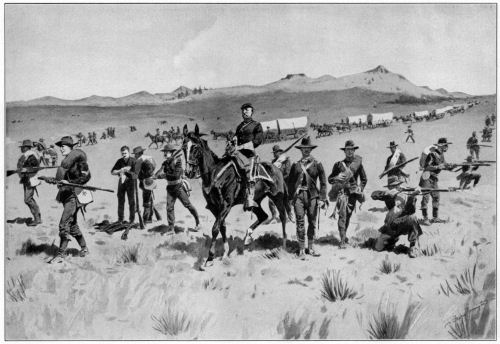 |
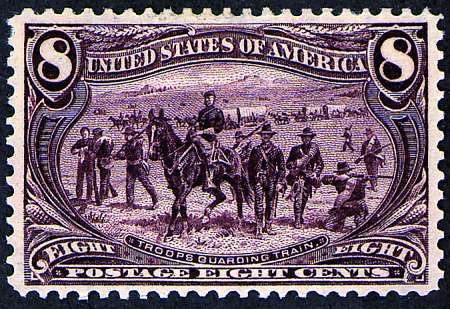 |
|
8¢ "Troops Guarding Train" (Scott #289) "Troops Guarding Train" is based on a drawing called "Federal Troops Conveying a Wagon Train" by Frederic Remington, one of the greatest artists to capture images of the Old West. It shows a long train of covered wagons, filled with immigrant families, escorted by a group of Federal troops guarding against the frequent Indian attacks. |
|
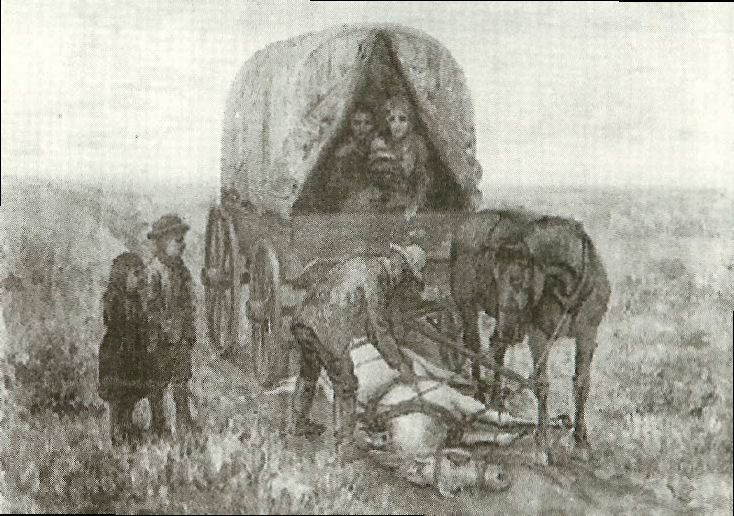 |
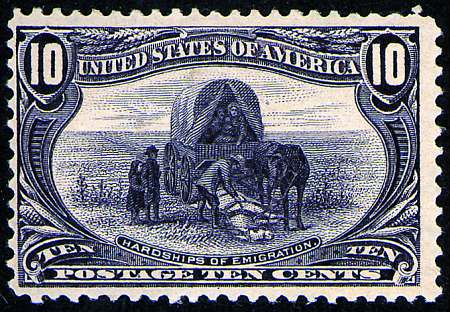 |
|
10¢ "Hardships of Emigration" (Scott #290) "Hardships of Emigration" is based on a painting by Augustus Goodyear Heaton, painted in Oklahoma around 1892. Showing a man attempting to revive a collapsed horse, one has to wonder why this subject was chosen in a series promoting development in the West. Unfortunately, the original painting was destroyed in a 1931 fire, but a photograph of the painting was discovered in the Bureau archives in 1992. |
|
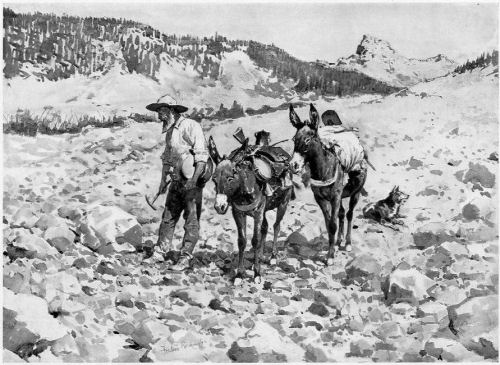 |
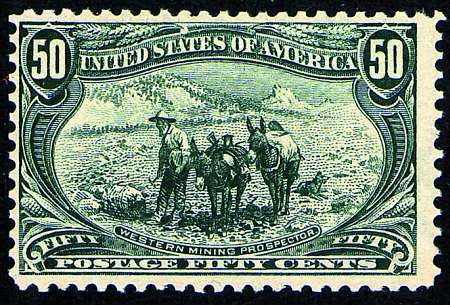 |
|
50¢ "Western Mining Prospector" (Scott #291) "Western Mining Prospector" is another design based on the superb work of Frederic Remington. The painting, "The Gold Bug", shows an old prospector and his two pack mules winding his way through the mountains in search of precious gold ore. |
|
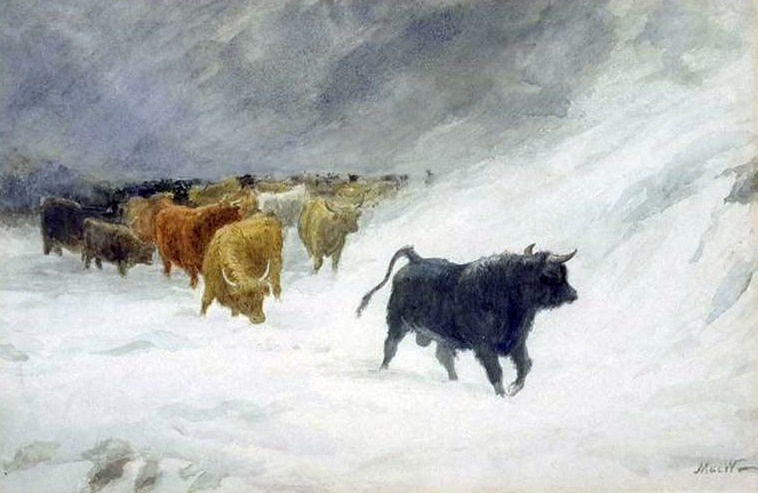 |
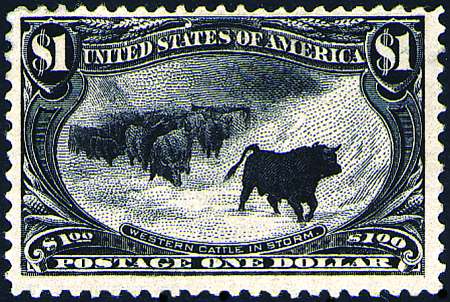 |
|
$1 "Western Cattle in Storm" (Scott #292) "Western Cattle in Storm" is considered by many to be the most beautiful U.S. stamp ever issued. Taken from an 1878 painting called "The Vanguard" by Scottish artist John A. MacWhirter, it actually shows a group of Scottish cattle in a snowstorm in the West Highlands! Bureau officials first saw the illustration in the form of a cattle company advertisement and were unaware that it pictured a scene in Scotland until after the stamp's issue. Inaccuracies aside, the superb engraving and dramatic coal black color make this a highlight of anyone's collection. |
|
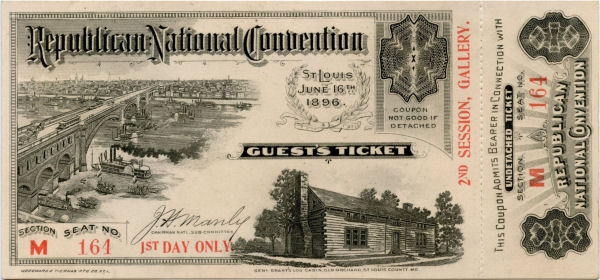 |
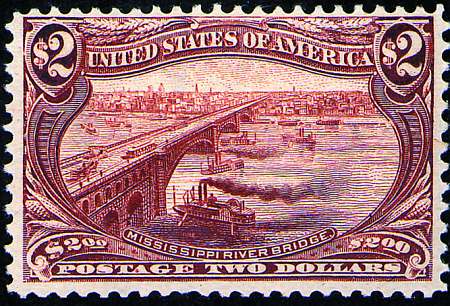 |
|
$2 "Mississippi River Bridge" (Scott #293) "Mississippi River Bridge" shows the Eads Bridge spanning the Mississippi, and behind it, a remarkable view of the St. Louis skyline. At the time of its construction in 1874, it was the longest arch bridge in the world, with a length of more than a mile. It was originally intended to be the 2-cent stamp, but they later decided on the "Farming in the West" design for the most commonly used stamp since it best represented life in the West. The scene is based on an engraving used for the 1896 Republican National Convention ticket. |
|
The 1998 Reissues
In 1998, the U.S. Post Office, repeating its successful reprinting of the 1893 Columbia series, decided to reprint the complete Trans-Mississippi series, from the original dies stored at the Bureau of Engraving and Printing for 100 years, and in the two-color format as originally intended in 1898.
While the two-color versions retain the original denominations and central vignettes, the designs of the 2-cent and $2 stamps were swapped, and minor changes were made to the inscriptions below the vignettes, reverting to the designs first proposed in 1898. Two sheets of 9 stamps were issued in 1998, a sheet containing the complete series, and a second sheet containing 9 of the popular $1 "Western Cattle in Storm" stamp.
Below you can compare the original 1898 released versions to the 1998 bi-colored versions.
| 1898 Issue | 1998 Reissue | |
 |
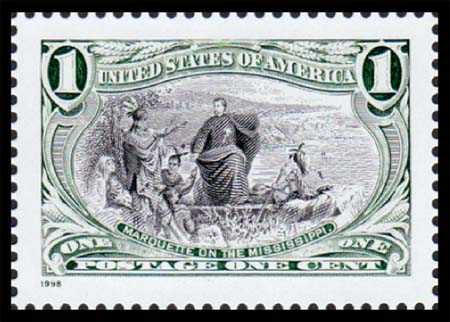 |
|
 |
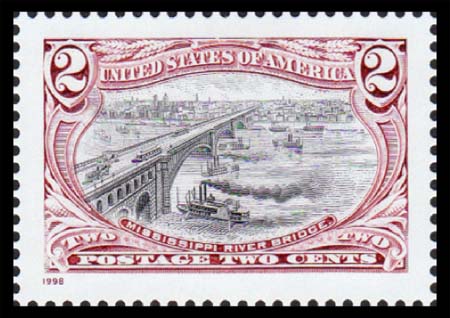 |
|
 |
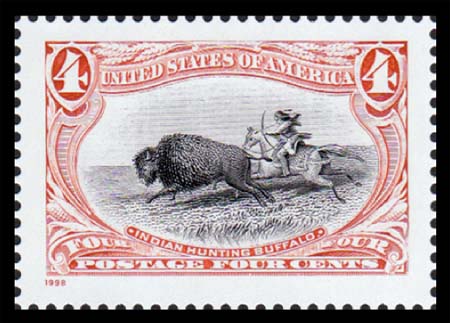 |
|
 |
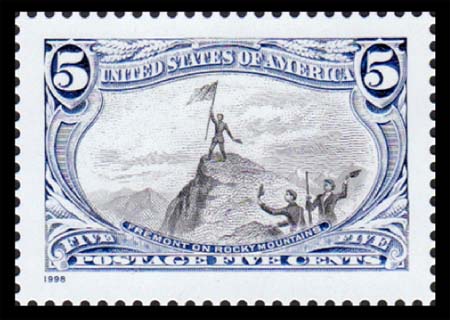 |
|
 |
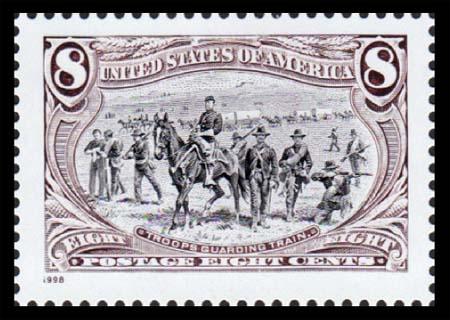 |
|
 |
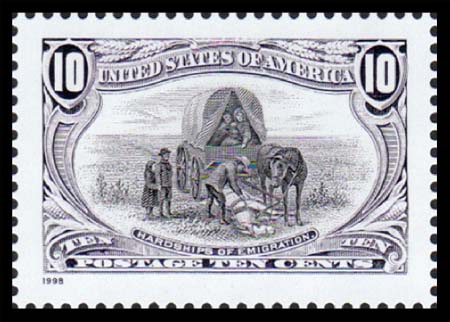 |
|
 |
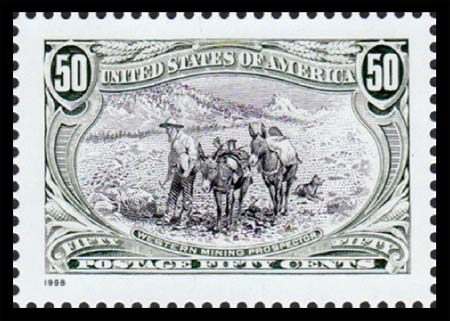 |
|
 |
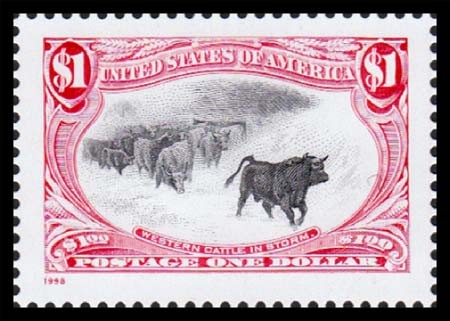 |
|
 |
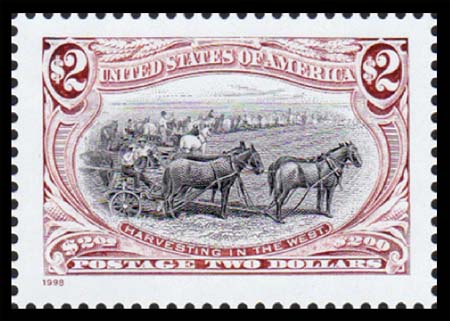 |

